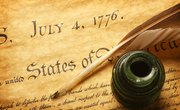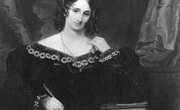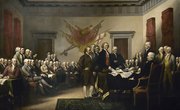Born near Baltimore, Maryland on November 9, 1731, Benjamin Banneker was one of only 200 free black people in all of Baltimore County, home to 13,000 whites and 4,000 enslaved black people. His father was a former slave and his mother the daughter of a former slave. Banneker was an astronomer and mathematician who achieved advanced education by self-study. He is best known for the series of almanacs he completed between 1792 and 1797, and for his involvement in the abolitionist movement.
Banneker's Abolitionism
Banneker did not leave Baltimore County until 1791 when, at the age of 59, he was hired by the federal government to help survey land for the District of Columbia. Banneker's friend Andrew Ellicott led this project. Shortly thereafter Ellicott introduced Banneker to abolitionist groups in Maryland and Pennsylvania. Banneker became a prolific pamphleteer and essayist whose publications -- and scientific acumen -- made him famous in abolitionist circles during his life.
First Black Civil Rights Leader
Banneker was not only an abolitionist, but the first black civil rights leader in the United States. He was involved in the anti-slavery cause almost 100 years earlier than other early abolitionist leaders such as Harriet Tubman or Frederick Douglass. He criticized both the institution of slavery and the oppression of Native Americans in the U.S. During this period he was threatened with physical harm, including gun shots outside his home.
Letter to Thomas Jefferson
Banneker's most famous abolitionist text was a letter addressed to the writer of the Declaration of Independence, then Secretary of State Thomas Jefferson. Appealing to the statement that "all men are created equal" and entitled to rights that include "life, liberty, and the pursuit of happiness," Banneker pleaded with Jefferson to reconsider his stance on slavery. He appealed both to Christian charity and the secular ideals of humanism in making his argument and declared slavery the result of the "unjustifiable cruelty and barbarism of men."
The Response
Jefferson sent a curt reply to Banneker''s letter within about two weeks asserting that he was not convinced of the racial equality of black Americans. He said that no one "wishes more ardently to see a good system commenced, for raising the condition, both of their body and mind, to what it ought to be" but ultimately accused Banneker of lacking proof. Even so, Banneker's correspondence with Jefferson was printed widely in 19th century abolitionist literature and remained famous after his death in 1806.
Related Articles
References
- PBS: Africans in America - Benjamin Banneker
- PBS: Africans in America - Banneker's Letter to Jefferson
- Biography: Benjamin Banneker
- Benjamin Banneker - Surveyor, Astronomer, Publisher, Patriot; Charles Cerami
- The 17th and 18th Centuries: Dictionary of World Biography, Volume 4; Frank N. Magill
- PBS: Jefferson's Reply to Banneker
Resources
Writer Bio
Christina Lee began writing in 2004. Her co-authored essay is included in the edited volume, "Discipline and Punishment in Global Affairs." Lee holds a Bachelor of Arts in English and politics from the University of North Carolina at Chapel Hill, a Master of Arts in global affairs from American University and a Master of Arts in philosophy from Penn State University.











